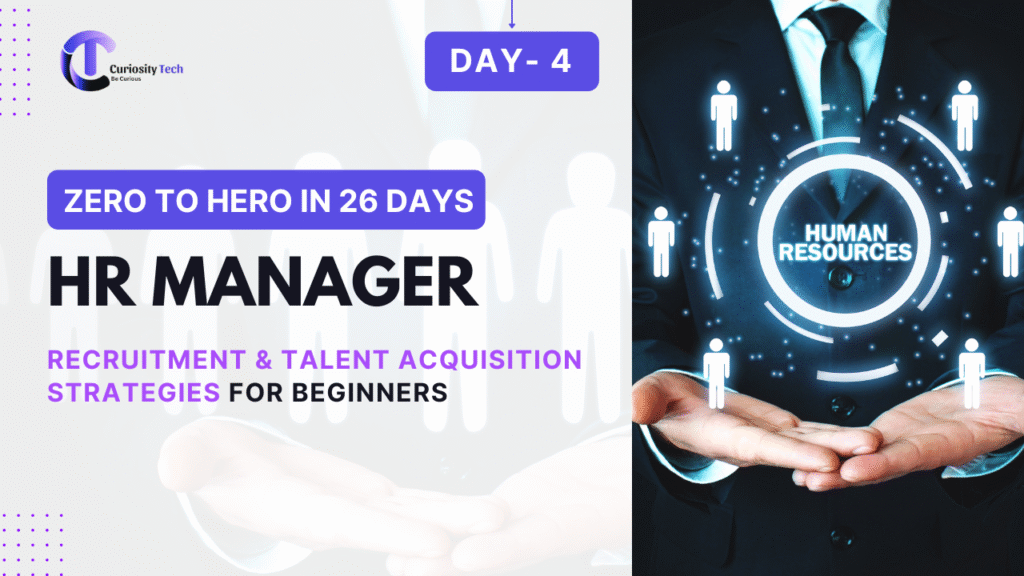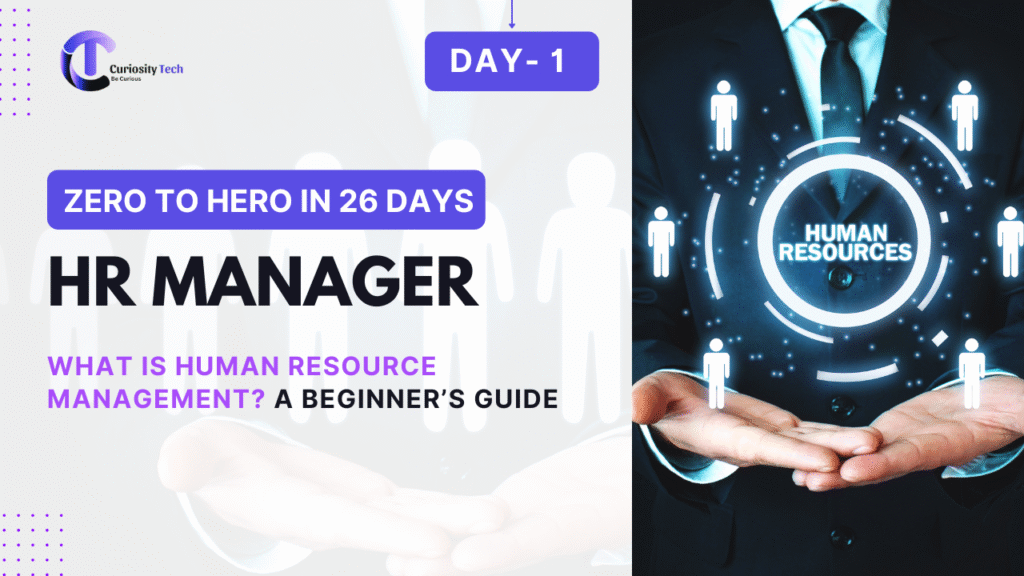Recruitment and talent acquisition are more than just filling vacant positions. They are about discovering, attracting, and nurturing the right talent to drive an organization’s growth. For beginners stepping into HR or organizational management, understanding the nuances of recruitment strategies is crucial to creating a workforce that is motivated, aligned, and productive.
At CuriosityTech.in, we understand the importance of building a strong talent pool. The right recruitment strategies not only improve business performance but also enhance employer branding, ensuring that top talent is attracted to your organization organically.
Understanding Recruitment vs Talent Acquisition
Many beginners confuse recruitment with talent acquisition, but these are distinct concepts:
| Aspect | Recruitment | Talent Acquisition |
| Focus | Filling current job vacancies | Long-term workforce planning |
| Approach | Short-term, reactive | Strategic, proactive |
| Metrics | Time-to-hire, cost-per-hire | Talent pipeline strength, retention rate |
| Goal | Immediate staffing needs | Building a sustainable talent ecosystem |
While recruitment is often transactional and focused on immediate needs, talent acquisition is a strategic approach that aligns hiring with long-term organizational goals.
Key Strategies for Recruitment Success
1. Crafting a Compelling Job Description
A clear, engaging, and detailed job description is the first step toward attracting the right candidates. It should highlight responsibilities, required skills, and the company culture. For instance, at CuriosityTech.in, every job listing emphasizes growth opportunities and innovation culture, making it attractive for technology enthusiasts and professionals alike.
2. Leveraging Multiple Sourcing Channels
Traditional job postings are no longer enough. Successful recruiters diversify their sourcing strategies:
- Job Portals: Platforms like Naukri, LinkedIn, and Indeed remain crucial.
- Social Media Recruitment: Engaging content on LinkedIn, Instagram, and Facebook can attract passive candidates.
- Employee Referrals: Leveraging the networks of current employees often results in high-quality hires.
- Talent Pools: Maintaining a database of potential candidates for future roles saves time in the long run.

3. Screening & Assessment
Efficient screening involves evaluating both hard and soft skills. While resumes give a snapshot of qualifications, interviews, technical assessments, and cultural fit evaluations ensure the candidate aligns with organizational values.
4. Interview Best Practices
Structured interviews, behavioral questions, and scenario-based assessments are essential. For instance, CuriosityTech.in emphasizes scenario-based questions for tech roles to assess problem-solving capabilities and adaptability.
5. Employer Branding
Candidates increasingly choose companies based on reputation and workplace culture. Maintaining a positive online presence on platforms like LinkedIn, Instagram, and Facebook can make a significant difference. Showcasing employee success stories, innovation projects, and workplace initiatives helps attract top-tier talent.
Talent Acquisition: A Strategic Perspective
Talent acquisition goes beyond immediate hiring needs. It’s about anticipating future requirements and aligning them with business goals. Some best practices include:
- Workforce Planning: Forecasting talent needs based on business growth and technological advancements.
- Building Talent Pipelines: Engaging with potential candidates through workshops, webinars, and internships.
- Diversity & Inclusion: Actively promoting diverse hiring ensures creativity and broader perspectives.
- Continuous Engagement: Keeping potential hires engaged even if there’s no immediate vacancy builds loyalty and readiness.

Recruitment vs Talent Acquisition
Organization
├── Recruitment
│ ├── Job Posting
│ ├── Screening & Interview
│ └── Onboarding
└── Talent Acquisition
├── Workforce Planning
├── Talent Pipelining
├── Employer Branding
└── Retention Strategies

This diagram illustrates how recruitment is a subset of the broader talent acquisition strategy.
Recruitment Lifecycle
- Job Analysis & Planning
- Sourcing Candidates
- Screening & Assessment
- Interview & Selection
- Offer & Onboarding
- Employee Engagement & Retention

This lifecycle emphasizes the continuous and strategic nature of talent acquisition.
Conclusion
For beginners, understanding recruitment and talent acquisition requires a mix of strategic foresight and operational execution. While recruitment ensures immediate staffing needs are met, talent acquisition focuses on long-term growth, employer branding, and organizational culture. Platforms like CuriosityTech.in provide practical insights, tools, and guidance for beginners, making the journey of hiring not only effective but also innovative and engaging.
Investing time in learning these strategies today ensures a workforce ready to face tomorrow’s challenges.


